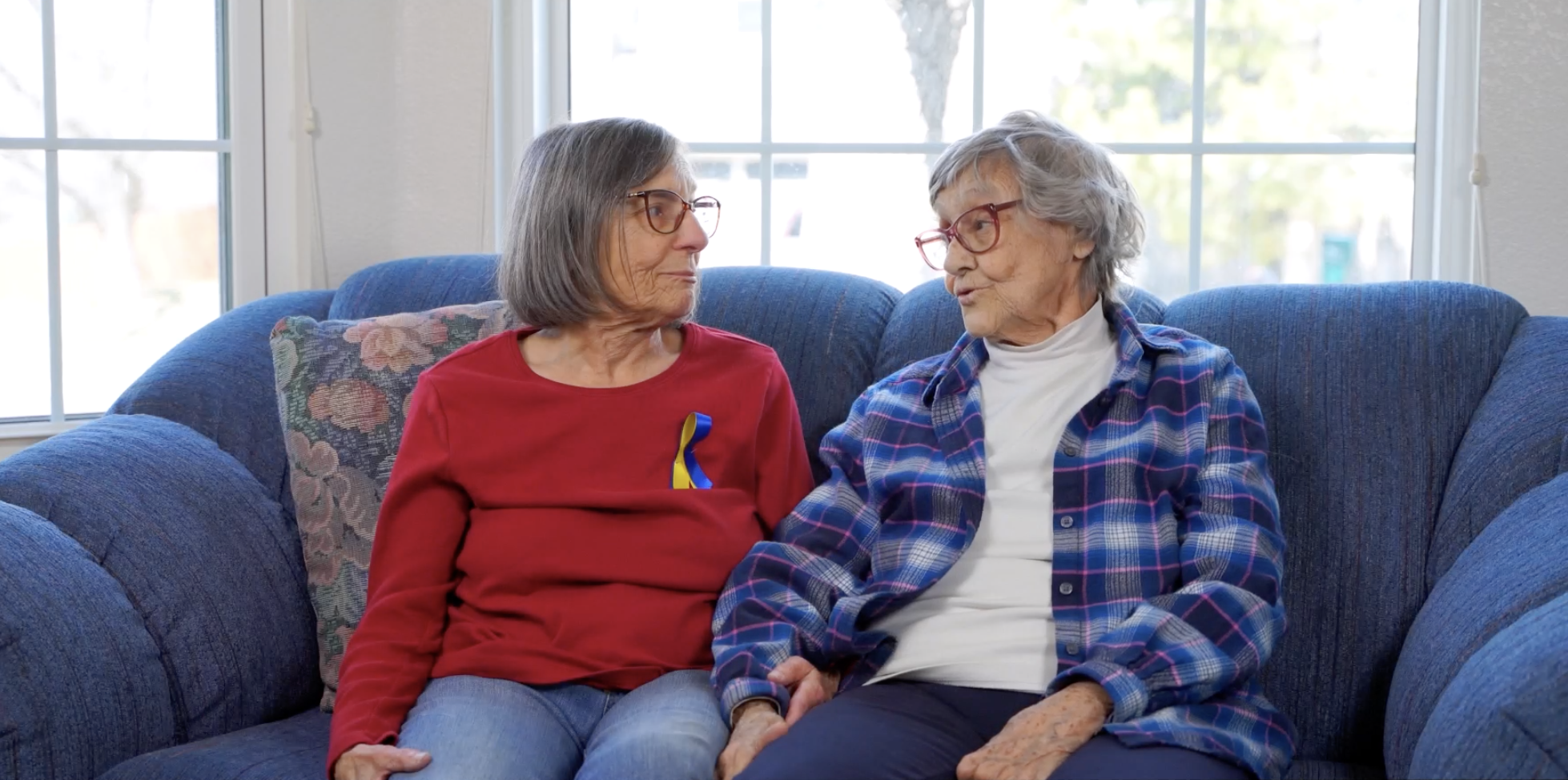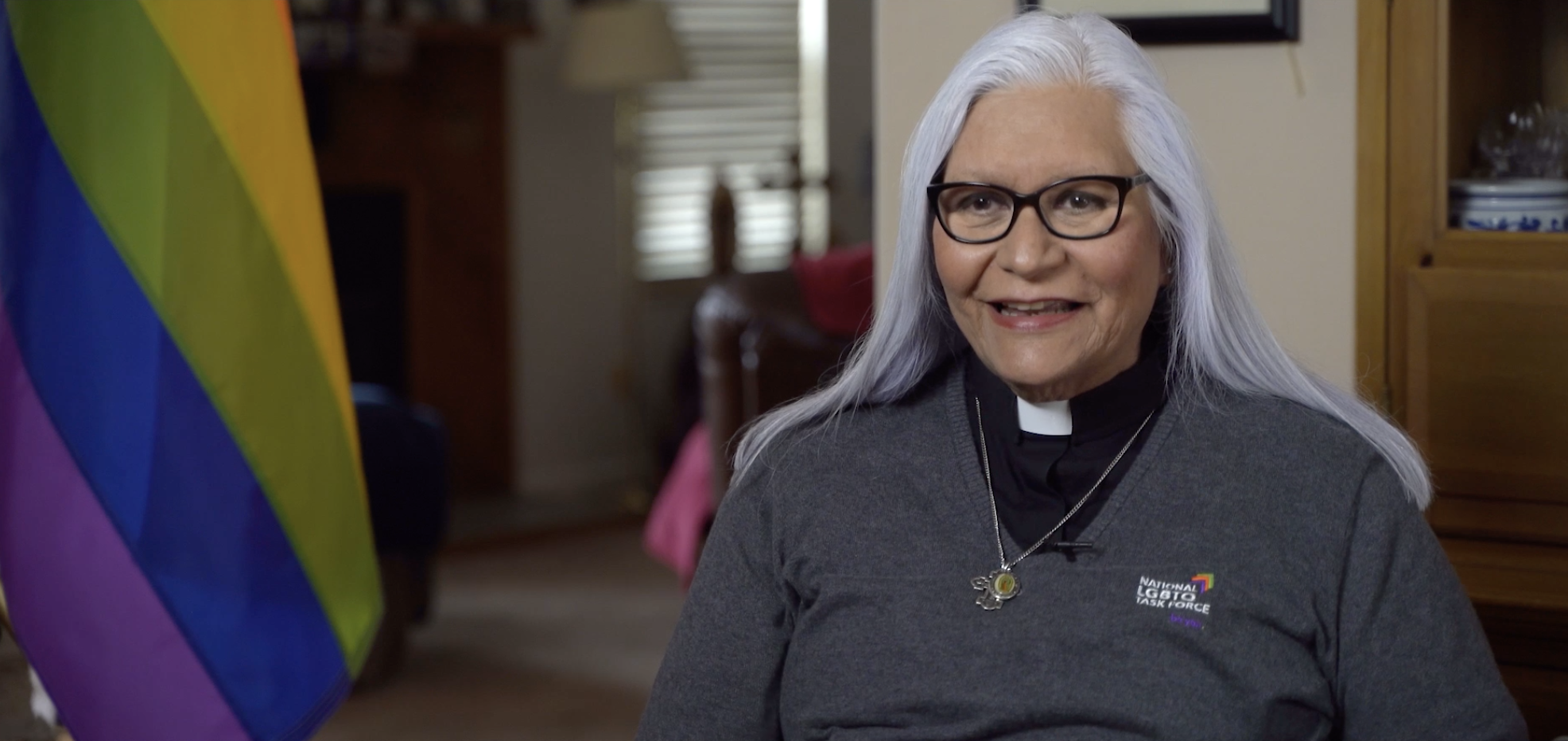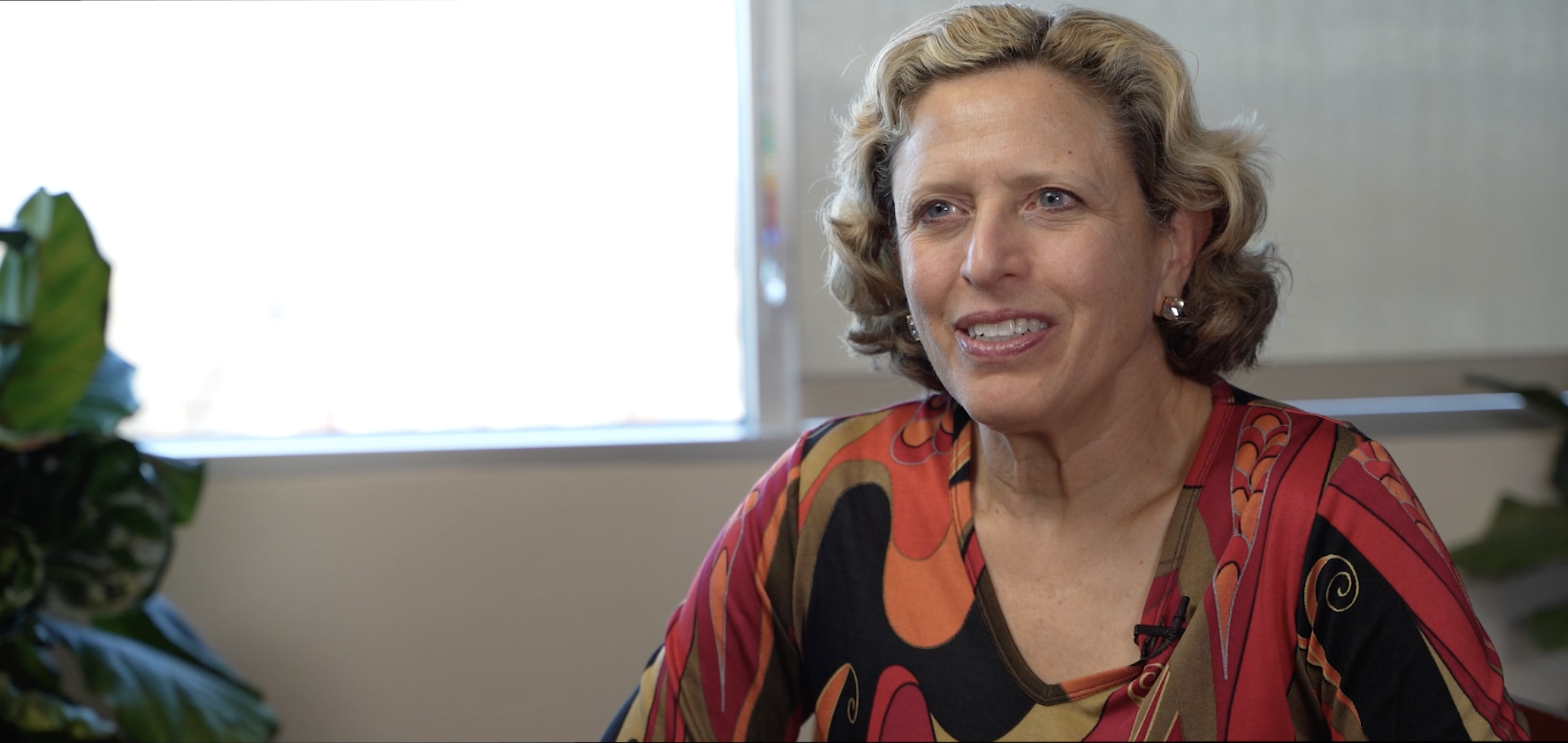
AJ Cies

Audio By Carbonatix
Dr. Carey Candrian, an associate professor at the University of Colorado School of Medicine, has spent the last nine years of her life researching health equity in older LGBTQ+ communities. As a lesbian herself, Candrian is deeply invested not only in collecting accurate data, but also in finding ways to humanize such statistics. That mission inspired her 2022 project Eye to Eye: Portraits of Pride, Strength, Beauty, a series of photographs portraying nearly three dozen LGBTQ women ages 59 to 85. People were so moved by the still portraits that Candrian decided to take it a step further this year with a new documentary, Just Us: The Longing and Hope of LGBTQ People.
Teaming up with cinematographer A.J. Cies, Candrian interviewed approximately thirty LGBTQ individuals and allies about the daily challenges of the LGBTQ population, including five women who were part of her Eye to Eye series. The hour-long film is part of Prismatic, a new exhibition at the Dairy Arts Center celebrating Colorado’s queer community. The exhibit spans two galleries – one exclusively showcasing black-and-white works, where Eye to Eye will also be on display, and one dedicated to color. We chatted with Candrian to find out more about her directorial debut.

Dr. Carey Candrian has been researching health equity in the LGBTQ+ community since 2014.
David Weil
Westword: Last year, Eye to Eye showcased portraits of older LGBTQ women alongside quotes about their health concerns as they age. How did that project lead you to directing Just Us?
Denver, make your New Year’s Resolution Count!
We’re $17,500 away from our End-of-Year campaign goal, with just a five days left! We’re ready to deliver — but we need the resources to do it right. If Westword matters to you, please contribute today to help us expand our current events coverage when it’s needed most.
Dr. Carey Candrian: It was like an immediate lead. I even was taken aback with the impact that the photos had. But I thought, “If a still image with a very short quote can move people and start new conversations and even open some hearts and minds, what would an actual film and hearing some of these people do?” That was really the impetus behind the film, just how powerful and impactful a still image was, and imagining what would happen if people could actually hear more from LGBTQ people and allies in the community [asking them] to make a change.
What are some of the key issues that this documentary explores?
Our goal was really simple, and that was to show LGBTQ people as people, which was what the photo exhibit did – to really help humanize a community that has a ton of stigma and a ton of misconceptions. From there, we ended up speaking with about 29 people – advocates, experts, community members, mental health professionals and physicians – with a goal of talking about the narratives that exist right now, especially the harmful rhetoric and the harmful narratives and these claims that aren’t backed by evidence or by science. Part of the film was really just to paint the picture of what’s happening now with the outrageous amounts of attacks, and this narrative that LGBTQ people are sick, they’re promiscuous, they’re groomers, they’re confused, they don’t know who they are – all these different things.
The second piece [allows] each person to speak very clearly about, for example, the way religion is used to discriminate, or the way the attacks on trans people are used to discriminate. That is really a way to present a different story, coming from the people closest to the issue, which are people who are LGBTQ or are caring for those who are LGBTQ.
The third piece is to also offer some hope. So it starts with how bad things are and how we got there. The second piece [shows] what a more accurate narrative from actual people in the community would look like and sound like. And then the third is…that despite the horrific things happening, there’s an element of hope. I think that’s really needed right now.

Reverend Nicole Garcia addresses the topics in Just Us from the perspective of a community member and faith leader.
AJ Cies
Besides the women that you knew from Eye to Eye, how did you find the other people in this documentary and decide that you wanted them to be a part of it?
We started with people from Eye to Eye. … Each person would bring up new ideas, and it led to them reaching out to people with relevant expertise. The majority of folks in the film identify as LGBTQ. But there are a lot of allies, also, which we wanted to be intentional about, knowing that we can’t do it on our own.
What was the filming process like for you?
It was pretty neat. I mean, this is my first film, but I’ve interviewed probably over 100 LGBTQ people at this point, so that part was familiar. I felt comfortable, and it was really great having someone else do the filming. But we ended up talking to so many remarkable people that the hardest part has been cutting it down to sixty minutes.
Just Us is a part of Prismatic, an exhibition at Boulder’s Dairy Arts Center celebrating the queer community in Colorado’s Front Range. How does the film complement the other works in the exhibit?
Drew Austin, who’s the curator of the Dairy Arts Center, has just done a phenomenal job. In the film, we had important advocates and important public health people, but we also talked to very community-based and “normal” non-celebrities, which is also part of Prismatic. Drew really wanted to highlight the non-celebrity queer artists and the non-visible, and I think that’s part of Just Us, too, is that it really elevates voices that haven’t been elevated. It shows the tremendous light behind this community and these advocates. So it’s very aligned with Prismatic, because it shows the devastation while also showing glimmers of hope and light, which is his whole idea. You see a variety of black-and-white images and color images, but the whole idea is that based on where you look and how the light shifts, you can either see shadows or lights. This film is just another way of shedding a new light on a dark, dark problem.

Dr. Jean Kutner offers her insight on the health consequences unique to closeted LGBTQ individuals in Just Us.
AJ Cies
Prismatic is on display through July 6. Where will people be able to watch the film after that?
A lot of people have been quick to say, “Get it in film festivals!” But that’s not the population that I want to watch [it]. I did have an exciting conversation with someone at Netflix; that would be a dream. My hope is that as many people can see it as possible, so that’s where I hope it’s going to be available to stream by people in all fifty states. I don’t know yet, but I’m optimistic that it will happen.
You’ve been studying LGBTQ health equity since 2014. Did you discover anything during this process that surprised you?
When I was talking with all of these participants, I knew they were all smart, which is why we reached out to them, but I was really blown away just thinking about the amount of expertise and humanity in Colorado, the amount of resources we have available in our own community and how much you can really learn when you just listen to people. Which is what I had been doing, but it just felt different this time. I don’t know if it’s because the camera was there or because the goal was very clear that they’re going to be part of a film, but I really was blown away with just how smart and remarkable people are and how passionate they are about these issues.
There’s a lot of hate right now, and what I really learned with this film was how much of it is fear. My hope is that the film stops the fear before it becomes hate. Not to deny the hate, but finding a way to actually address the fear is part of what we’re trying to do here. But that was something that was sort of radical talking with these people – that the point of intervention is the fear. The hate is harder to unravel, but with the fear, it still feels like there’s room to intervene.

The average lifespan for an LGBTQ individual is twelve years shorter than that of a cisgender or straight individual.
AJ Cies
Just Us: The Longing and Hope of LGBTQ People, through July 6 at Prismatic, Dairy Arts Center, 2590 Walnut Street, Boulder, free. For more information, visit the Dairy Arts Center’s website.